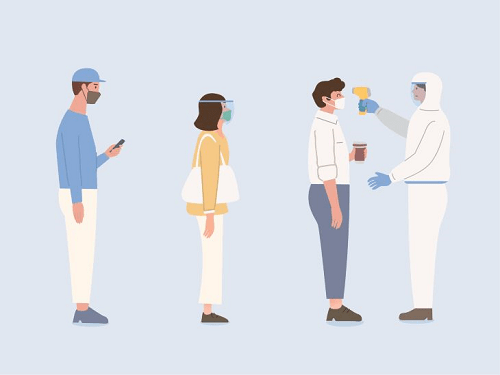
12.22.20 – ISHN – Ryan Quiring
“It was the best of times, it was the worst of times.” Charles Dickens wrote those words more than 160 years ago, but they ring true today as we seek to protect workers in the wake of the pandemic. In the same week that highly effective coronavirus vaccines became available to the public, we continued to see record-breaking infection rates and deaths from COVID-19. We have learned effective methods for preventing transmission of the virus, but coronavirus fatigue has led to lapses that are sickening employees.
Once coronavirus vaccinations become widely available, legal experts have suggested that companies will be able to require them for most employees as a condition of work. In the meantime, preventing COVID-19 outbreaks will continue to dominate health and safety priorities for businesses in 2021
The Swiss cheese approach
There are several forms of protection that businesses can put into place if they haven’t done so already, and when layered together they become far more effective than the sum of their individual parts. Think of it as the Swiss cheese approach.
The idea is that, by layering different types of prevention and protection, companies can exponentially bring risk in the workplace down to a tolerable level. For example, four tactics each cut COVID-19 risk to some degree: social distancing, using masks and other personal protective equipment (PPE), increasing workforce training, and monitoring employees’ self-assessments. Yet, implementing them together cuts the likelihood of a COVID-19 outbreak by a factor of 10,000x.
Starting sooner
Often coronavirus prevention is focused on the physical worksite with employees wearing PPE and working at reconfigured, socially distanced stations. Some industrial businesses are taking a cue from biotechnology firms and setting up color-coded work zones to minimize interaction between different teams. At many locations, it’s also common to see concierges or greeters check each worker’s temperature and ask a brief set of questions before allowing that person to enter the building.
In 2021, coronavirus prevention among companies will start earlier—before potentially infectious employees come to work. Already, some forward-thinking companies are asking employees to self-report their COVID-19 risk remotely via their mobile phones. If they get an “OK” response, they can go to the worksite and use their mobile phones to show greeters they have approval to enter. If they get a warning indicator of potential COVID-19 risk, they have to wait for a manager or supervisor to advise them on the appropriate course of action to protect the health of other workers
This type of self-assessment is one of the most powerful new tools we have to help make workplaces safer for people. Today, self-reporting is focused on whether a worker has potentially been exposed to COVID-19. But, these same self-assessments could be used, for instance, to determine if a worker is too tired to operate heavy machinery and should be assigned to another task for the day.
Trusted, timely communications
It is important that employees who self-report have confidence they won’t be penalized either with a loss of pay or worse, getting fired. We have all seen the stories about employees with COVID-19 symptoms coming to work and spreading the virus because they didn’t feel like they could call in sick. For this reason, company policies and communications need to clearly articulate that the company’s priority is ensuring safe work conditions.
Of course, the goal is to reinforce best practices in preventing coronavirus exposure in the first place. Here, it is important to follow the lead of higher risk industries—for instance, construction, oil and gas, and other utilities—where it is well understood that long-term exposure to any potential risk leads to complacency. Businesses in these sectors have seen how regular “safety talks” can offset this complacency and decrease injuries by roughly 80%.
In 2021, companies will need to combat coronavirus fatigue by doubling down on regular safety training. The key, whether conducting this training weekly or monthly, is to include new information to ensure that employees don’t “tune out.” An example might be sharing the results of new research by the Journal of Korean Medical Science published on November 23, 2020. It showed how one person became infected with COVID-19 after being in a restaurant 20 feet away from the initial coronavirus carrier for just five minutes—all because of the air flow from the air conditioner.
Regulatory compliance
In addition to efforts aimed at prevention, companies will also need to continue addressing a range of evolving regulations from regional and local governments aimed at preventing and reporting COVID-19 outbreaks. If companies haven’t done so already, they need to automate their policies and reporting to comply with a disparate array of frequently changing government mandates. As we’ve already seen over the past few months, failing to comply can lead to steep fines, temporary business closures, and even lawsuits.
Although many efforts in the next year will focus on addressing the pandemic, the best practices applied to this challenge will also lead to improvements in overall policies and practices for ensuring workers’ safety in 2021 and beyond.
